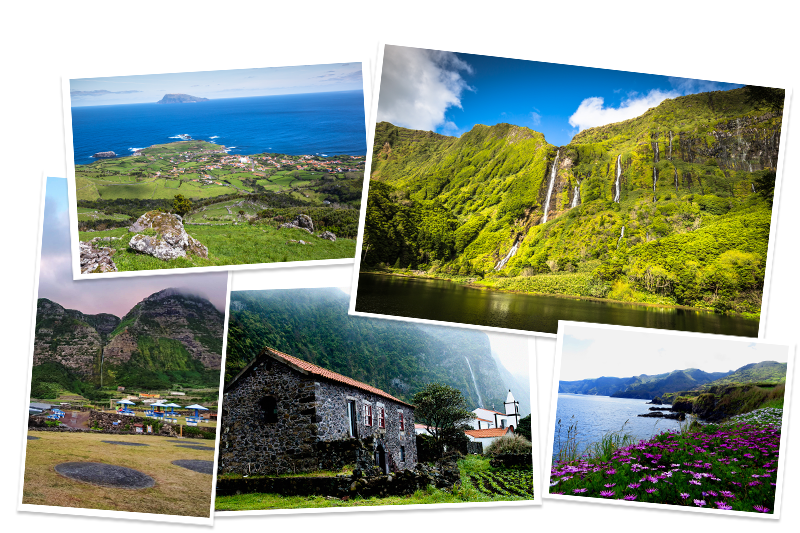
Nature
Rocha dos Bordões – Flores Island most famous landscape and one of the most important in the Azores. Situated in a great elevation, the Rocha dos Bordões is a set of impressive vertical basalt columns similar to a pipe organ. It’s covered by moss, lichen and other vegetation. Considered, since 2004, a Regional Natural Monument by the Regional Government of the Azores.
Ilhéu de Monchique – Most western point of Europe, once used as a reference point for sea navigation.
Fajã Grande – Fajãzinha – Considered as one of the most beautiful coastlines in the Azores. Surrounded by lush vegetation, what catches the eye are the impressive two dozen waterfalls, from which stands out the one named Ribeira Grande, for its 300 meters.

Heritage
Nossa Senhora do Rosário Church – Built in the eighteenth century, its façade was later covered with tiles. It has two towers and a retable in revivalist painted wood stands out on the inside. From the church square it’s possible to view the harbor and part of the village.
Flores Museum – With a complete museum collection, it is divided in two centers: the old São Boaventura Convent and the House of Pimentel de Mesquita. There are collections on the exploitation of farms, scrimshaw and maritime tools, along with tools used in carpentry, steel works, cotton and wool textiles. The collection recovered from the Slavonia, a ship wrecked on the coast of Flores in 1909, is quite curious.
Cuisine
The islands of the western group remained isolated for centuries, given their distance and the intemperate weather. As such, the inhabitants learned to rely on the local production for their staple diet. During the winter months, pork dishes were the main choice, due to the bad weather conditions that didn’t allow fishing in the abundant sea. Roasted tuna, conger stew, omelet served with seaweeds that grow on the shores are some of the typical dishes of the island. The microclimate favors the growth of guava trees from which yellow, red and purple fruits are picked to make a local jam.
